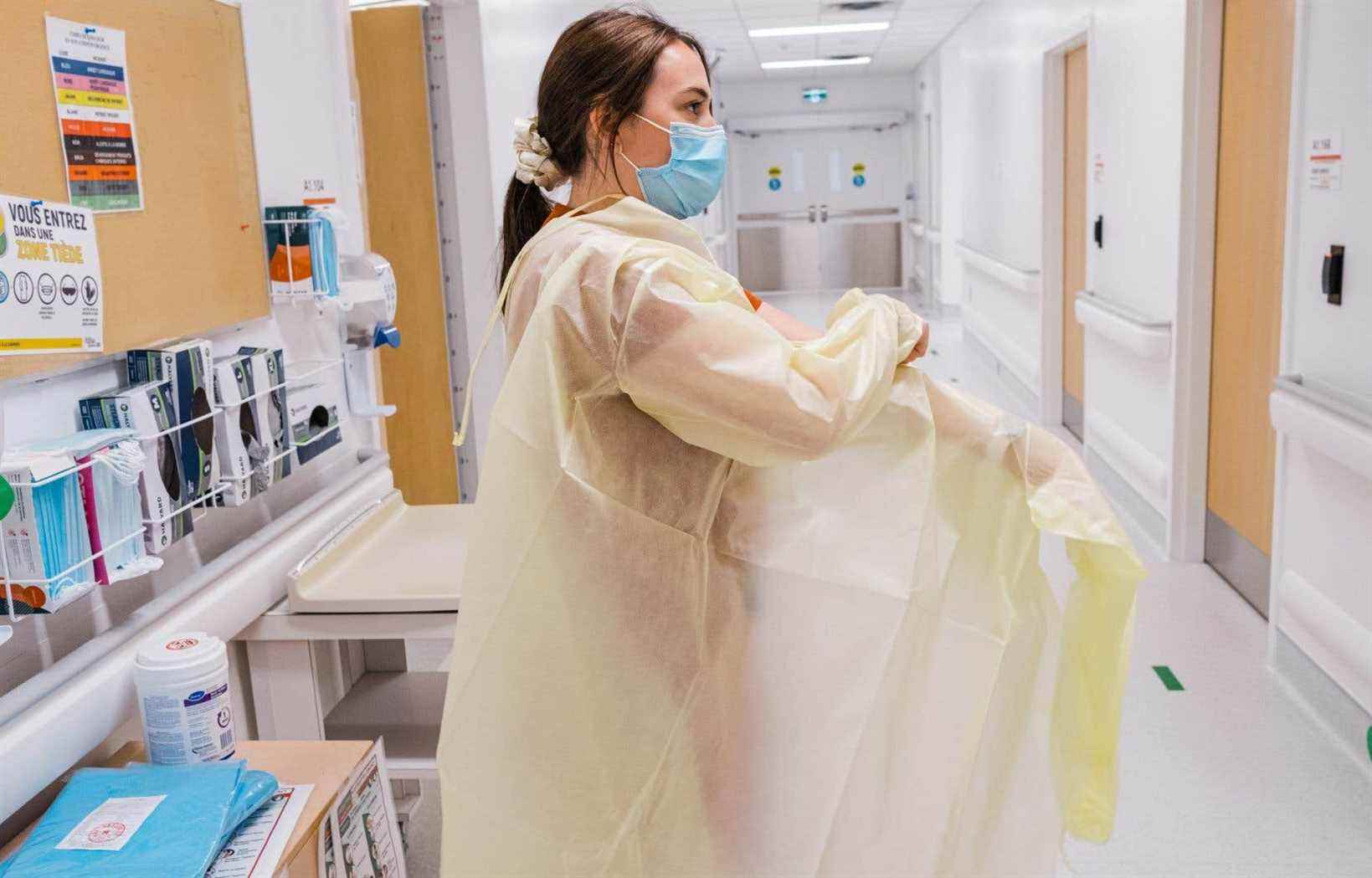Faced with a “meteoric” increase in COVID-19 cases in the greater Quebec City region, the public health authorities of the Capitale-Nationale and Chaudière-Appalaches are united to avoid a “disaster” in hospitals.
Both regions hit a new high in daily infections on Thursday. Chaudière-Appalaches recorded 566 new cases. North of the river, this number reaches 671, unheard of since the start of the pandemic.
“The increase in cases is dazzling”, warns the DD Liliana Romero, director of public health in Chaudière-Appalaches. “And it is accelerating. “
More than 220 active outbreaks affect the region, which remains the one where COVID-19 circulates the fastest in Quebec.
Hospitals are holding up – for now. The coronavirus has sent 15 people to the hospital in Chaudière-Appalaches, including three in intensive care. Half are located in Saint-Georges and Thetford Mines, two sectors with respectively 935 and 1,560 cases per 100,000 inhabitants.
In the Capitale-Nationale, hospitals are treating 16 COVID patients. At the same date last year, 135 hospitalizations due to the coronavirus worried the hospital system in the Quebec City region.
If we are not careful, the increase could be catastrophic. The number of cases doubles roughly every two or three days.
Public Health is concerned that the explosion of cases observed in recent days will spill over to hospitals in the region in the coming days and weeks.
“The situation is deteriorating very quickly”, explains Dr Stéphane Bergeron, director of medical affairs at the CHU de Québec. “In a few days, we tripled the number of hospitalized patients. “
More contagious and as virulent as Delta
The director of public health of the Capitale-Nationale, Dr André Dontigny, affirms that the studies confirm the extreme contagiousness of the new variant Omicron. They also show that its virulence is similar to that of the Delta variant.
“If we are not careful, the increase could be catastrophic. The number of cases doubles roughly every two or three days, ”he explains.
A wave is therefore preparing to fall on the hospital network, fear the regional health authorities, at the same time when it lacks arms. On Thursday, 111 health workers at the CHU de Québec were in isolation due to exposure to COVID-19.
“As a professional who has been at the front for 21 months, I have never felt the system so fragile in the face of the demand that will be made of it”, says Dr Mathieu Simon, head of the intensive care department at the Institut universitaire de cardiologie et de pneumologie de Québec.
In data | To learn more about COVID-19
“It is inevitable that there will be load shedding”, adds Dr Bergeron. “It’s a bit like playing Battleship, that we receive torpedoes and missiles, but we do not know where they are coming from. “
Load shedding in the east
Already, the labor shortage is causing service disruptions in eastern Quebec. At Amqui hospital, in La Matapedia, a lack of respiratory therapists forces the closure of the obstetrics department from December 24 to 26.
At Notre-Dame-du-Lac hospital in Témiscouata, a nursing staff shortage caused the interruption of obstetrical services from 24 to 28.
Similar scenario in Lac-Mégantic, Estrie, where the closure of the obstetrics wing must be reassessed on December 30.
The load shedding effort began Wednesday in Charlevoix, which has 120 active cases. Oncology services in the region are now concentrated at the Baie-Saint-Paul hospital and elective surgeries are postponed for a minimum period of one month.
On the North Shore, public health fears that the six beds dedicated to COVID patients are no longer sufficient in the face of the rapid growth in cases.
“The first week of December we only had two cases. Between the 12th and the 18th, we had 72 cases. This week, we are already at 100 cases ”, recalls the regional director of public health, Dr Richard Fachehoun.
As the holidays approach, he implores the North Shore population to remain cautious and limit their celebration to two family bubbles.
“Share gifts, but not the virus,” concludes Dr Fachehoun.
